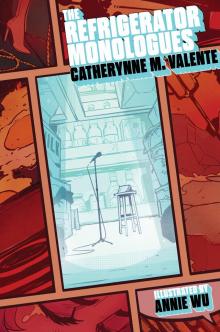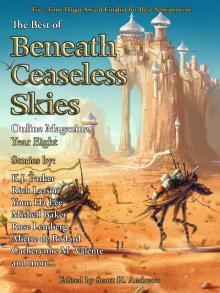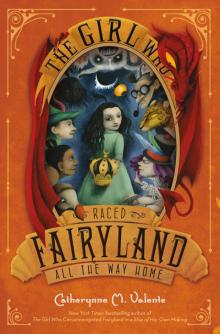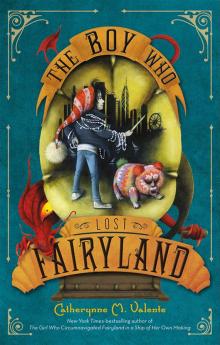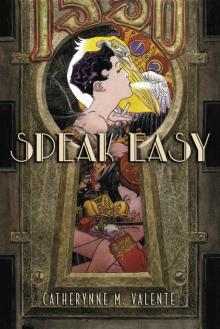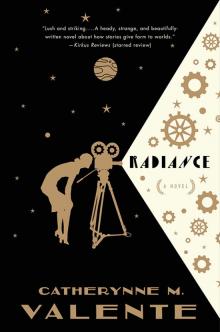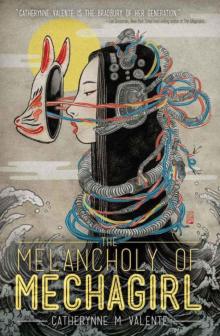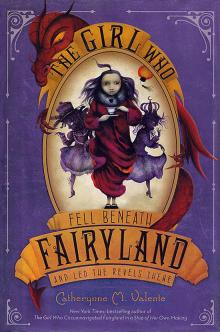


Novice to Master, Page 9
Soko Morinaga
In my house on that day, hot water was poured in the sink, a little rubbing alcohol was added, and my grandfather’s whole body was wiped with a wet towel. I was allowed to wipe his chest, but the towel slid from my tiny hands, which then skidded directly across Grandfather’s skin. I can still feel the sensation of touching his skin. Before, when Grandfather had let me ride on his shoulders, I could see the wrinkled skin on the nape of his neck. Under my hands, which clutched his forehead to keep from falling of, I could feel the wrinkled skin. His body was flexible and warm then, whereas now the hands that unexpectedly touched him found stiffness. The coldness of his body, a coldness completely unlike that of ice, sent a chill throughout my own body. This six-year-old child received a sharp lesson about death.
My family carried me along the narrow lanes between the rice fields as the coffin was taken away. The crematorium was not like those of today with their heavy doors like bank vaults. It was no more than a hole, through which the family shoved the coffin and through which its edge could still be seen. The hole was heaped with straw, and firewood was laid against the casket. Then the family, all together, lit pine torches and started the fire. When the straw and the firewood and the coffin started to crack and pop in the flames, we went home to await the next day, when we would gather Grandfather’s ashes. Even to my young eyes, as I looked back over my shoulder at the soycolored smoke rising from the chimney of the fire I had just helped to start, death was personal. It was not “somebody else.”
Now, I was seeing my grandfather—the man I respected and wanted to emulate—being burned up. What I saw then was not someone else’s death, but my own future. I am not exaggerating this incident, looking back and dramatizing it from the distance of many years. I really did, as a six-year-old child, see the future of my own body burning in that fire.
inexhaustible dharma
SINCE I EXPERIENCED my grandfather’s death, there have been two or three times that I have wanted, from the bottom of my heart, to die. Perhaps you have had similar feelings. Once, in fact, I even tried to overdose on medicine, but I believe that I unconsciously kept that dose within safe bounds. I could not die. I believe that the main reason for my inner reluctance to die was my having been made to experience the death of my grandfather. My cognizance of death as a result of that experience was of a depth and a breadth that I could not easily leap across.
The “death” that many people know, however, is not the future death-in-earnest of their own bodies. Oftentimes, the only death they know is death as it occurs in a historical drama or a suspense film that they enjoy watching as they lie on the sofa eating snacks.
Let me relate another story, about my old grammar school teacher, a truly great man. From the second grade up through graduation, my classmates and I were fortunate to have him in charge, and he had a decisive influence on each and every one of us.
A few years ago, in commemoration of the half century that had passed since graduation, we held a class reunion. Out of some fifty classmates, more than ten had died, and the thirty-three of us who gathered amounted to almost full participation. I myself, putting aside all of my work, would not have missed it for the world. We had a banquet and spent the night at a hot spring resort, and although we drank our saké, not a soul proposed that we sing karaoke. Even as we gathered around our teacher, drinking informally together, our meeting was a serious one. Various members of the group consulted our teacher and some even asked me questions about different things affecting their lives. That it was altogether like a training seminar was due to the deep influence of our teacher.
This gentleman was a great educator, and he has continued, since his retirement, to lead an exemplary life as a member of the community. His personal lifestyle, too, is impeccable. Despite his eighty-plus years, he appeared more robust than any of his former pupils!
When the time came to retire after our banquet, all those who had gathered around to hear our teacher’s words seemed reluctant to impose upon him further, so it happened that he and I were given a room to share for the night. We had placed our pillows side by side, lain down, and turned off the light when he called out, “Morinagasan,” kindly affixing the honorific -san to the name of the student he had taught so long ago.
“Heaven forgive me for this foolishness,” he continued, “but lately I’ve been so afraid of dying that I almost feel it would be better not to have been born!”
The words of my teacher did not hit me lightly. On the contrary, I recalled how diligently he had labored throughout his eighty years, and his confession touched me with all the more poignancy.
Living, as we do, a finite existence, appearing as form in this world of phenomena, we are without fail subject to the law of cause and effect, the law of karma. It is a foundation stone of Buddhist teaching that where there is birth, there is death; certain efforts bear certain results. All research of the natural sciences and of the humanities is conducted on the basis of this principle of causation. Further, in matters of everyday life, even people who don’t think carefully about such things seek to live in such a way as to produce causes that bring about positive results.
There are those who have, in accordance with this law, consistently endeavored to accumulate good karma and who have met with success in their efforts. When such a person ultimately collides with the insurmountable walls of old age, sickness, and death, walls that no amount of stockpiled karma can help one to scale, they are truly disappointed.
Inevitably, the person who has taken special pride in their work meets the onslaught of old age—which renders them incapable of working as they have up to now—with special dread. The person who boasts of an exceptionally sharp intellect will be especially intimidated by a progressive dimming of the mind. The person who has lived an exemplary life as a member of society will be especially frightened to witness the siphoning away of their own physical and mental power.
Thus it is that we cannot hope to live our closing years with peace of mind simply by striving to conduct a meritorious life under this law of cause and effect.
Within Buddhism, there is a field of teaching that applies to our finite existence within causality and that utilizes the terms exhaustible dharma and created dharma. Called the Precepts of the Seven Buddhas because it has been taught by all the buddhas who have appeared in the world, the teaching instructs us to live life attempting to plant wholesome seeds and thereby harvesting beneficial fruits. A well-known verse summarizes the doctrine:
To avoid doing evil,
To do good,
To purify the heart:
This is the teaching of all buddhas.
If one makes a deep inquiry through practice into this teaching, delving into one’s own heart, which suffices to purify itself, one naturally goes beyond the category of a teaching limited to life within this body and subject to karmic retribution. It is unfortunate that people tend to interpret this kind of doctrine—sowing good seeds, reaping good fruits; sowing bad seeds, reaping bad fruits— only in its application to worldly happiness and prosperity. Of course this aim is, in itself, extremely important, but success within these limits alone does not assure the ultimate peace of mind that transcends sickness, old age, and death.
No matter what efforts you have channeled into the production of success, once your name is called, the slate of your worldly accumulations is cleared. This cycle applies not only to the human realm but to all phenomena, which must go through a time of birth, a time of abiding, a time of transition, and a time of returning to original emptiness. In the case of human beings, this is birth, aging, illness, and death. All phenomena are like bubbles, appearing and disappearing, impermanent, changing. No individual entity exists anywhere that carries on, as is, in perpetuity.
This is the Buddhist emptiness or voidness, called in Sanskrit shunyata and in Japanese mu, and the reality of this emptiness is called inexhaustible dharma. All being is without fail exhausted. But the voidness or emptiness, which is the very foundation of all being,
is inexhaustible. That the exhaustible and the inexhaustible are not separate is expressed in the well-known line from the Heart Sutra, “Form is exactly emptiness, emptiness exactly form.”
The fact is, however, that it is exceedingly difficult to see clearly for oneself that all things are in themselves empty. We can say that in order to realize the intrinsic emptiness of ourselves, we must wring from our bodies sweat of oil.
to die while alive
WHEN I BECAME a monk and entered the training hall, more than anything in the world, I passionately desired enlightenment. Kyoto, where my training monastery was located, was not a land abundant with rice paddies, and so there was but ten days’ supply of staple foods rationed out per month. That ten days’ supply of staples included such things as corn and sweet-potato flour and, at times, an undrinkable, faded yellowish tea powder. This was our fare when I was in the training hall, single-mindedly doing zazen and seeking enlightenment.
But this experience of enlightenment did not come easily. I had been educated, up until I began Zen training, to see with the eyes, hear with the ears, and think it all out with the head—and that was the only way I knew in which to proceed with my investigation. In training, however, I was informed that satori is not some sort of conclusion brought forth through my own judgments, which are discerned from the outside world through the six senses (sight, hearing, smell, taste, touch, mind). Still, I could not readily grasp just how to get beyond this habitual way of perception to another way of experiencing.
Daito Kokushi, the founder of Daitokuji temple and one of the most illustrious Zen masters in Japanese history, in his final words admonished: “Be ever mindful, throughout the twenty-four hours of the day, to apply yourselves to the study of the Unthinkable.” This Unthinkable is the transcending of logic or intellectual understanding, and I hadn’t the faintest notion how best to throw my energy into this practice of the Unthinkable. So I just blindly went at zazen. Each night while everyone else was fast asleep, I persisted, sitting on my cushion. Unfortunately, during this period it was my duty to awaken the others in the mornings.
As I mentioned, food was very scarce, and I was already quite lean. I toiled at manual labor and practice during the day and continued zazen without sleep through the night, so that while I had every intention of remaining upright, I would wind up in a sort of fainting state, pass out and tumble off the cushion.
Monastery rising time was 3:00 A.M. every day. It must have been that I would faint at 2:00 or 2:30 A.M. Coming to with a start, I would find it past time to awaken the others. This continued for three days, until finally I was roughly reprimanded, charged with “forgetting” to wake up and thus throwing the whole monastic day out of kilter. Densu is the title of the position I held. I was told in no uncertain terms that in the monastic rules it is dictated that the densu watch the clock “just as he guards his very own eyeballs.”
“Do you really have any interest in practice or not?” shouted my superior. “What do you think you’re here for, anyway?”
To be asked if one really has any interest in practice is, in effect, to be kicked out of the training hall. Fortunately, however, the master took pity on me, and fellow monks kept an eye out, helping me to avoid further slips. My obstinacy did prevail, though, and I continued to practice without ever lying down to rest at night. Despite my unrelenting persistence at sitting, every night I would grow hazy and doze off so that my zazen was far from strong and clear.
Then, to make matters worse, I reasoned that taking in food would make me sleepy, so I stopped eating. As I mentioned before, meals in those days were not what could be called substantial. We took our meals formally, chanting sutras before and after. Before each meal an announcement would be made such as “Today’s lunch will consist of three dumplings per person.” This meant that each monk would receive three balls of pressed potato starch, each about the size of an old copper coin. There was no soy sauce or miso, and these dumplings would be boiled in salt water, of which we would each receive three bowls. To stop eating even this because it might make me drowsy was going too far.
Then, one night, all of my ammunition was exhausted.
I lost all sense of wanting enlightenment; to continue seeking satori was inconceivable. Gone was the physical and mental energy necessary to maintain a level of consciousness in which one tries to verify with the eyes and hear with the ears. The soft cushion beneath me was a steel plate. My whole body was a mass of sheer pain. It was not “I” sitting on that cushion; it was sheer fatigue. As if consciousness were lost in a fog, all was hazy.
Suddenly, under some impetus unknown to me, the fog lifted and vanished. And it is not that the pain in my own body disappeared, but rather that the body that is supposed to feel the pain disappeared. Everything was utterly clear. Even in the dimly lit darkness, things could be seen in a fine clarity. The faintest sound could be heard distinctly, but the hearing self was not there. This was, I believe, to die while alive.
At the time, there were actually no thoughts. I have no idea of the duration of this state of utter clarity, of what happened to precede or follow it. Perhaps I was roused by a sharp voice. I only know that when I came to myself, I felt tremendously happy! It was just as if I didn’t know the dance of my own hands, the steps of my own feet. It never crossed my mind that this was a satori experience or that “I had kensho.” Without any theorizing, I felt only the brimming joy of having had a heavy burden suddenly swept away.
Going over my experience in retrospect, in light of various passages in the sutras and in the records of the ancient teachers, I see that a verse by Shido Bunan Zenji is very fitting:
Die while alive,
Thoroughly die.
Then just do as you will,
and all is right.
The famous psychiatrist Elizabeth Kübler-Ross has collected statements from persons who have died a clinical death and then recovered to tell about it. According to these reports, when one is about to die, just in that instant, it is not only that the body, which has suffered in sickness and pain, is totally released from that suffering but that the person actually feels released from the body itself. These people reported that, although they did not know where they were, they could clearly see others gathered around their bodies, wailing or clinging to and shaking the corpse. It would appear that there may be certain slight similarities between such experiences of medical death and death in practice, but this is something I cannot confirm.
What I, and others who have gone through the experience, can positively affirm is that there is a state of mind that surpasses cause and effect, a state other than the one in which we seek to gain “that” by doing “this.” It is a samadhi in which each instant is whole as it stands, in its totality. Each instant is reflected perfectly.
It is wonderful and necessary to throw one’s energies into living in such a way as to plant, and thereby reap, the seeds of wholesome action within this limited world. Still, living a life solely based on the law of cause and effect— acting in anticipation of future or immediate results—a person will, without fail, come up against a barrier and feel despair.
By meeting what you are faced with right now, though, in this very instant, completely without judgment or evaluation, you can transcend by far all question of cause and effect. You may be working in the kitchen or sweeping in the garden or cleaning the toilet or laboring for somebody else, but you do it without consideration of its relative merit. That means simply doing with all your might, becoming one with whatever situation in which you find yourself in this instant. I would like for you to clearly know that there is this other way of living your life.
On the one hand, even though you apply yourself to and are successful in reaping benefits for yourself, without transcending the barriers of old age, sickness, and death, you will not be tranquil in the evening of your life. On the other hand, if you cling to the idea of emptiness and fall into nihilism, it is easy to make the mistake of passing your whole life in vain. But t
here is another way: the middle way, falling into neither extreme. This middle way is called the Dharma gate of liberation, liberation from both the exhaustible and the inexhaustible.
give yourself to death
I WOULD LIKE TO TELL YOU one final story, a story that has moved me very deeply. It is the story of Miss Okamoto, who stayed by my teacher’s side for forty years, up until his death.
Miss Okamoto, as I said earlier, quit her job in young women’s education and entered the temple after the age forty as a disciple of Master Zuigan. She trained as a lay person, never shaving her head or taking the vows of a nun, but also never wearing makeup as a laywoman might. She carried out all her affairs tidily attired in baggy work pants.
It was not her intention to become a great monk, so rather than focus on the training itself, she worked hard to make life smooth for the master whom she so respected. By washing clothes, cooking, and raising fresh vegetables, Miss Okamoto ensured that Zuigan Roshi would always be available to teach the Dharma to others. Anyone who looked at Miss Okamoto would see a thoroughly self-sacrificing person.
Master Zuigan died at the age of eighty-seven, when Miss Okamoto was sixty years old. When the final ceremony of the forty-nine-day bereavement period was concluded, she packed up her belongings and, declaring that she did not wish to be a burden to me, left the temple. She moved into the rented cottage of a different temple, where she continued to live out her years of retirement, under no one’s supervision, just as she had lived when Master Zuigan was alive.




